The American Civil War
1861 - 1865
"The political hostilities of a generation were now face to face with weapons instead of words." General Pierre G.T. Beauregard, CSA The United States of America had not been united for some 40 years before the onset of the
civil war. The young nation had cultivated two very different societies. Even so, no one
could have predicted the bitter four year conflict that would cost more than 600,000 lives.
Slavery, important to the economy of the South was at the root of the conflict. Cotton was
the principal crop, and more than 3 and a half million slaves were in bondage and used to
raise and harvest it. In the north, slavery had died out and commerce, not cotton, was king. The expansion in
the west brought about more competition between the two societies. Southerners wanted
slavery extended into these lands, Northerners wanted the spread of slavery curbed.
Southern politicians began talking of secession. South Carolina was the first to secede on
December 20, 1860. they were quickly followed by Mississippi, Florida, Alabama, Georgia
and Louisiana. In February of 1861, the Confederate States of America was formed with
Jefferson Davis, a former US Secretary of War at its head. A month later Texas joined the
Confederacy .
At 04:30 a.m. on April 12,1861 the first cannon shot of the American Civil War rang out. It
was fired by a Southern cannon.
General Robert E Lee surrendered the remnants of the Confederate Army of Northern
Virginia to Lt. General U.S. Grant, on the afternoon of Sunday, April 9, 1865. The war was
over.
In Loving Memory of HENRY FORDYCE, My G G Grandfather, who enlisted in the 40th Indiana Volunteer Infantry at the age of 60, fought and was wounded at the Battle Of Shiloh.
Monument to the Indiana troops that fought at Shiloh BATTLE OF SHILOH
ORDER OF BATTLE - Shiloh, Tennessee - Sunday, April 6, 1862 - Monday, April 7, 1862 Confederate Forces-
Army of the Mississippi -
General Albert Sidney Johnston -- killed
General Pierra G.T. Beauregard
1st Corps - Major General Leonidas Polk
2nd Corps - Major General Braxton Bragg
3rd Corps - Major General William J Hardee -- wounded
Reserve Corps - Brigadier General John C Breckinridge
Federal Forces -
Army of the Tennessee -
Major general U.S. Grant
Major General John A McClernand's Division
Brigadier General W.H.L. Wallace's Division
Major General Lew Wallace's Division
Brigadier General Stephen A Hurlbuts's Division
Brigadier General William T Sherman's Division
Bridadier General William Nelson's Division
Brigadier General Thomas L Crittenden's Division
Brigadier General Benjamin M Prentiss's Division
Army of the Ohio -
Major General Don Carlos Buell
Bridadier General Alexander McCook's Division
Brigadier General Thomas J Wood's Division The Battle of Shiloh was fought in April, 1862 on the banks of the Tennessee River in south
central Tennessee. In two days, more casualties were inflicted than in all the rest of
America's wars added together up until that time. Despite this, no land exchanged hands.
The North was taken by surprise and Grant's career was salvaged only by President
Lincoln's support. General Albert Sidney Johnston was killed on the battlefield. The
Confederacy was defeated in a battle that absolutely had to be won.
The Battle of Shiloh proved to be one of the bloodiest fought in the western theater, and
produced enormous numbers of casualties. Grant had approximately 51,000 troops over the
two days, including the 18,000 men he received from Bell and Lew Wallace for the second
day of the battle. He lost a total of 13,047 men. The Confederates had about 40,000 men
and their total losses were 10,694.
Southern hopes of recovering west and middle Tennessee were dashed forever at Shiloh.
The battle turned out to be just another obstacle in the path of the Union's conquest of the
Mississippi Valley, which, when it was completed in 1863, split the Confederacy and
assured it's eventual downfall.
Photo's of the Shiloh Battle Field THE HORNET'S NEST - - SUNKEN ROAD
During the morning of April 6, 1862, the thrust of the initial Confederate attack had pushed the
Federal positions back toward Tennessee. Brigadier General Benjamin Prentiss, whose camp the
Rebels had overrun early on, was forced back a mile to a strong position along a sunken road.
Prentiss's line, which included the greenest of the Union troops, was extended to his right by
brigades of Brigadier General W.H.L. Wallace, and, to his left, by regiments of Brigadiet
General Stephen Hurlbut's division. For several hours, the Federals standing or crouching behind
the natural bank of the road, fought off almost a dozen determined Rebel attacks on their
position which was dubbed by the Rebels "The Hornet's Nest" because of the intensity of fire
stirred up every time an assault was mounted on it.
By the end of the fighting in this area, there were so many dead Rebel's in the field in front of the
sunken road, it was said it was possible to walk across it stepping on bodies without touching the
ground.
In the early afternoon of Arpil 6th, Prentiss's Federal's were entrenched in the sunken farm road,
screened in front by dense thickets. There they fought off the last of four attacks made by
Colonel Randel Gibson's brigade of Major General Braxton Bragg's division. The Confederates
had to advance across an open field exposed to Union artillery. As they neared the thicket, rifle
fire poured into their ranks.
At about 17:00 Prentiss finally was outflanked, he surrendered with 2,200 men. However, their
brave stand had forestalled the Rebel advance and inflicted heavy casualties. In fact, the Union
surrender served to break the momentum of the Rebel attack, the push in this sector was halted
while the transfer of prisoners was organized. By the time the Rebels resumed their offensive,
Grant had formed another defensive line, which held off the Rebels until nightfall.
Ruggle's Battery
The Confederate soldiers at the battle of Shiloh named the area along the Sunken Road the "Hornet's Nest" because of the heavy fire they had to face there. Gen. Daniel Ruggles witnessed eleven unsuccessful attacks and then gathered all the artillary he could find - 62 cannon in all - and opened fire on the Union line.With this aid, they were successful in capturing General Prentiss.
BLOODY POND
The surgeon of the 9th Illinois established a field hospital near a pool of water that became
known as "Bloody Pond". It actually was a sink hole that had filled with water. This was where
the wounded would crawl to wash their wounds and get a drink of water, sometimes dying at the
water's edge. It is said so many washed their wounds and died at the water's edge that it became
red with their blood. This did not deter the thirsty,wounded and exhausted men from drinking
from it.
Shiloh : A Requiem - By Herman Melville 40th Indiana Infantry Return to Klose Quarters Please Visit "CIVIL WAR WEBSITES"
"Little Ed" Parker - An interesting Story ! My greatgrandfather James Albert Smith
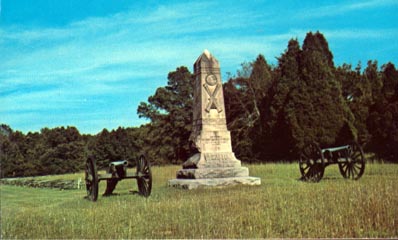
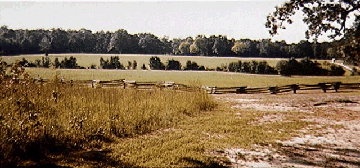
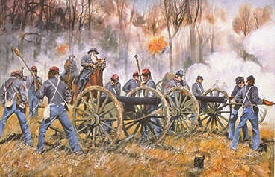 art by ragsdale
art by ragsdale
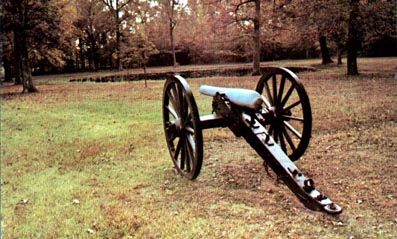
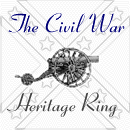
 This Civil War Heritage Ring site is owned by
This Civil War Heritage Ring site is owned by
Dee Klose.
Enlist in the Civil War Heritage Ring!
[Skip Prev]
[Prev]
[Next]
[Skip Next]
[Random]
[Next 5]
[List Sites]
(Scroll to the middle of the page to find "Little Ed".)
served with the 58th Indiana Infantry
and fought at Chickamauga.
Chickamauga - Civil War
Please visit for information about this battle.